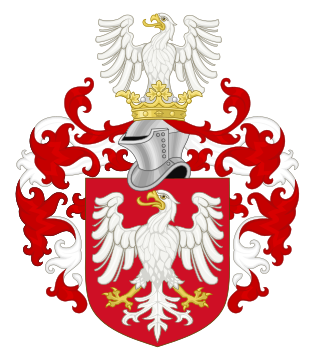
The House of Piast was the first historical ruling dynasty of Poland. The first documented Polish monarch was Duke Mieszko I. The Piasts' royal rule in Poland ended in 1370 with the death of King Casimir III the Great.

Głogów is a city in western Poland. It is the county seat of Głogów County, in Lower Silesian Voivodeship. Głogów is the sixth largest town in the Voivodeship; its population in 2021 was 65,400. The name of the town derives from głóg, the Polish name for hawthorn.
Władysław II the Exile was the high duke of Poland and duke of Silesia from 1138 until his expulsion in 1146. He is the progenitor of the Silesian Piasts.

The Duchy of Greater Poland was a district principality in Greater Poland that was a fiefdom of the Kingdom of Poland. It was formed in 1138 from the territories of the Kingdom of Poland, following its fragmentation started by the testament of Bolesław III Wrymouth. In 1177, the state broke had separated into the duchies of Poznań, Gniezno and Kalisz, and united again in 1279, lasting in that form until 1320, when it was incorporated back into the Kingdom of Poland. Its capital was Poznań.
Bolesław IV the Curly, a member of the Piast dynasty, was Duke of Masovia from 1138 and High Duke of Poland from 1146 until his death in 1173.
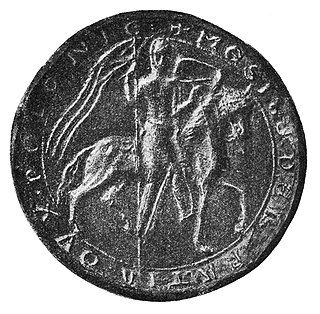
Mieszko III, sometimes called the Old, was Duke of Greater Poland from 1138 and High Duke of Poland, with interruptions, from 1173 until his death.

Agnes of Babenberg was a scion of the Franconian House of Babenberg and by marriage High Duchess of Poland and Duchess of Silesia.

Duchy of Masovia was a district principality and a fiefdom of the Kingdom of Poland, existing during the Middle Ages. The state was centered in Mazovia in the northeastern Kingdom of Poland, and during its existence, its capital was located in the Płock, Czersk and Warsaw. It was formed in 1138 from the territories of the Kingdom of Poland, following its fragmentation, that was started by the testament of Bolesław III Wrymouth. The country existed in the years: 1138–1275, 1294–1310, 1370–1381, and 1495–1526, between that time, going through fragmentations of its territory into smaller duchies and its unification. The states formed during its fragmentation were duchies of Kuyavia, Dobrzyń, Czersk, Płock, Warsaw, Rawa and Belz. In 1526, the country was incorporated into the Kingdom of Poland.

The Duchy of Silesia with its capital at Wrocław was a medieval duchy located in the historic Silesian region of Poland. Soon after it was formed under the Piast dynasty in 1138, it fragmented into various Silesian duchies. In 1327, the remaining Duchy of Wrocław as well as most other duchies ruled by the Silesian Piasts passed to the Kingdom of Bohemia as Duchies of Silesia. The acquisition was completed when King Casimir III the Great of Poland renounced his rights to Silesia in the 1335 Treaty of Trentschin.
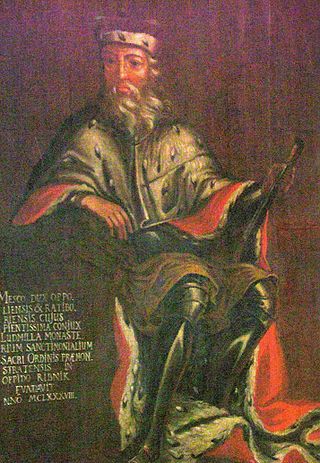
Mieszko IV Tanglefoot was Duke of Kraków and High Duke of Poland from 9 June 1210 until his death one year later. He was also Duke of Silesia from 1163 to 1173, Duke of Racibórz from 1173, and Duke of Opole from 1202.

Bolesław I the Tall was Duke of Wroclaw from 1163 until his death in 1201.

The siege of Głogów or Defense of Głogów was fought on 24 August 1109 at the Silesian town of Głogów, between the Kingdom of Poland and the Holy Roman Empire. Recorded by the medieval chronicler Gallus Anonymus, it is one of the most well known battles in Polish history. The Polish forces were led by Duke Bolesław III Wrymouth, while the Imperial forces were under the command of King Henry V of Germany. Bolesław was victorious.

Bytom Odrzański is a town on the Oder river in western Poland, in Nowa Sól County of Lubusz Voivodeship. As of December 2021, the town has a population of 4,191.

The Duchies of Silesia were the more than twenty divisions of the region of Silesia formed between the 12th and 14th centuries by the breakup of the Duchy of Silesia, then part of the Kingdom of Poland. In 1335, the duchies were ceded to the Kingdom of Bohemia under the Treaty of Trentschin. Thereafter until 1742, Silesia was one of the Bohemian crown lands and lay within the Holy Roman Empire. Most of Silesia was annexed by the King of Prussia under the Treaty of Berlin in 1742. Only the Duchy of Teschen, the Duchy of Troppau and the Duchy of Nysa remained under the control of the Bohemian crown and as such were known as the Duchy of Upper and Lower Silesia until 1918.

The Silesian Piasts were the elder of four lines of the Polish Piast dynasty beginning with Władysław II the Exile (1105–1159), eldest son of Duke Bolesław III of Poland. By Bolesław's testament, Władysław was granted Silesia as his hereditary province and also the Lesser Polish Seniorate Province at Kraków according to the principle of agnatic seniority.
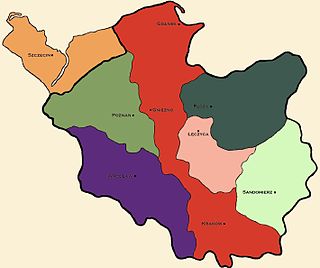
The last will and testament of the Piast duke Bolesław III Wrymouth of Poland, established rules for governance of the Polish kingdom by his four surviving sons after his death. By issuing it, Bolesław planned to guarantee that his heirs would not fight among themselves, and would preserve the unity of his lands under the Piast dynasty. However, soon after his death his sons fought each other, and Poland entered a period of fragmentation lasting about 200 years.

Konrad Laskonogi, was a Duke of Głogów since 1177 until his death.
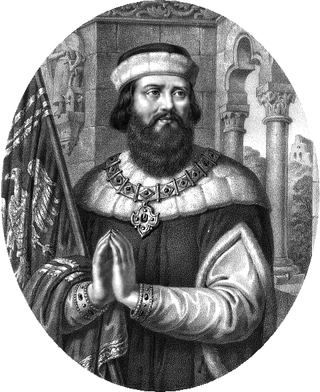
Casimir II the Just was a Lesser Polish Duke of Wiślica from 1166 to 1173, and of Sandomierz after 1173. He became ruler over the Polish Seniorate Province at Kraków and thereby High Duke of Poland in 1177; a position he held until his death, though interrupted once by his elder brother and predecessor Mieszko III. In 1186 Casimir also inherited the Duchy of Masovia from his nephew Leszek, becoming the progenitor of the Masovian branch of the royal Piast dynasty, and great-grandfather of the later Polish king Władysław I the Elbow-high. The honorific title "the Just" was not contemporary and first appeared in the 16th century.
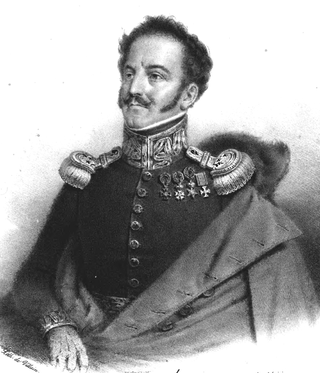
Jan Nepomucen Umiński of Cholewa (1778–1851) was a Polish military officer and a brigadier general of the Army of the Duchy of Warsaw. A veteran of the Kościuszko Uprising, Napoleonic Wars and the November Uprising, he died in exile in Wiesbaden.

This is the 1109 German-Polish War. For a list of all Polish-German Wars, see Polish-German Wars.



















